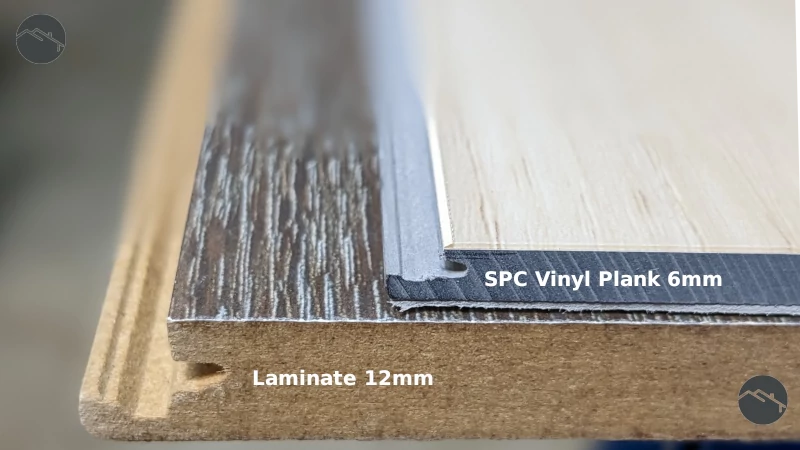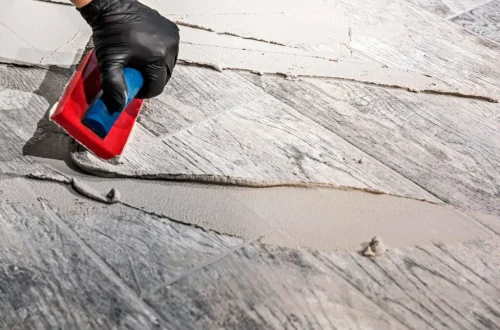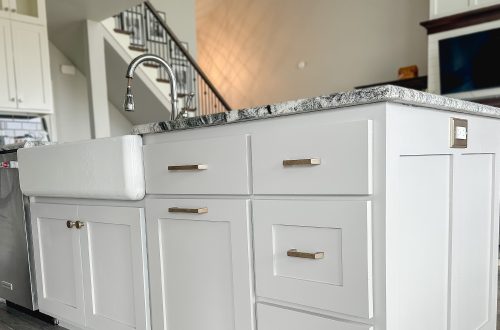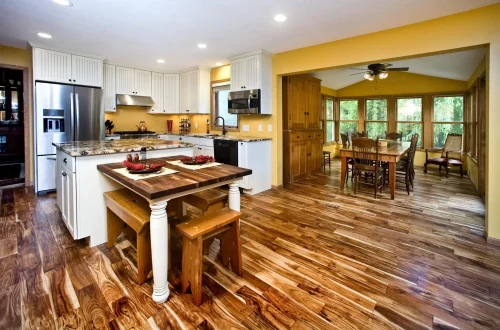When facing the ultimate flooring showdown between two of the most popular, durable, and budget-friendly options on the market today – laminate and luxury vinyl plank (LVP) – homeowners often find themselves in a dilemma. Both flooring types offer significant advantages over traditional options like carpet and hardwood, but they serve different needs and applications. This comprehensive comparison will help you understand the core differences between these materials, their performance characteristics, and which option is most suitable for your specific situation. Understanding these distinctions is crucial for making an informed decision that will stand the test of time and provide both aesthetic appeal and functional performance in your home. The choice between laminate and LVP can significantly impact your home’s value, comfort, and maintenance requirements, making this decision one of the most important in your home improvement journey.
Round 1: What Are They Made Of?
Understanding the fundamental construction differences between laminate and LVP flooring is essential to comprehending their performance characteristics. These differences directly impact their durability, appearance, and appropriate applications.
Laminate Flooring Construction:
Laminate flooring consists of multiple layers pressed together under high pressure. The core layer is made of high-density fiberboard (HDF) or medium-density fiberboard (MDF), which is a wood byproduct made from wood fibers, resin, and wax. This core layer provides the bulk and stability of the flooring.
The bottom layer is a stabilizing layer that provides moisture resistance and prevents warping. The top layer is a clear, protective wear layer made of aluminum oxide, which protects the design layer from scratches and fading.
The design layer is a high-resolution photographic image that mimics the appearance of natural materials like wood, stone, or tile. This is what gives laminate its realistic appearance.
LVP Flooring Construction:
LVP is made entirely of synthetic materials, primarily polyvinyl chloride (PVC) or vinyl compounds. It has a solid PVC vinyl core that provides its distinctive properties. This core is completely synthetic, containing no wood products.
Like laminate, LVP has a wear layer on top for protection, but it also includes a clear urethane coating that adds durability. The design layer in LVP is also photographic, but it’s printed on vinyl rather than paper, which contributes to its water-resistant properties.
Some LVP products include an attached underlayment for sound dampening and easier installation, while others do not.
Construction Impact: The wood-based core of laminate makes it more similar to engineered hardwood in feel and appearance, while the vinyl core of LVP provides superior water resistance and slightly different acoustic properties.
Round 2: The Water Test (The Biggest Differentiator)
This is where the most significant difference between these materials becomes apparent and often determines the best choice for specific applications in your home.
LVP: The Waterproof Champion:
LVP is 100% waterproof, making it ideal for areas prone to moisture, including kitchens, bathrooms, basements, and laundry rooms. The solid vinyl core prevents water from penetrating and causing damage, unlike wood-based products that can swell and warp when exposed to moisture.
This waterproof nature means you can clean LVP with wet mops and even spill water without worry. It’s also resistant to humidity changes that might affect wood-based flooring.
Important Note: While LVP is waterproof, the installation method matters. Click-lock systems have seams that may allow water to seep through, so proper installation is crucial for maintaining waterproof properties in wet environments.
Laminate: Water-Resistant, Not Waterproof:
Laminate is only water-resistant, not waterproof. The HDF core will absorb water if exposed for extended periods, leading to swelling, warping, and permanent damage. This makes laminate unsuitable for high-moisture areas like bathrooms or basements prone to flooding.
Quick cleanup of spills is essential with laminate flooring. If water sits on the surface or seeps into joints, it can cause irreparable damage to the core material.
Round 3: Durability and Comfort
Both laminate and LVP offer excellent durability compared to traditional flooring options, but they excel in different areas and provide different comfort characteristics.
Durability Comparison:
Scratch Resistance: Both materials offer good scratch resistance, but LVP generally wins in this category due to its softer surface, which allows light scratches to be less visible. High-quality laminate with a thick wear layer is also highly scratch-resistant.
Dent Resistance: LVP is generally more resilient to dents than laminate. The softer vinyl surface allows for some indentation recovery, while laminate can be permanently marked by heavy impacts.
Fade Resistance: Both materials are relatively fade-resistant, but LVP’s vinyl construction tends to maintain its color better over time, especially in areas with direct sunlight.
Comfort and Feel:
Sound: LVP typically provides better sound dampening than laminate, especially when it has an attached underlayment. Laminate can be noisier underfoot, producing a hollow sound when walked upon.
Feel: LVP feels warmer and more comfortable underfoot, similar to vinyl but with the appearance of wood. Laminate has a harder feel that’s more similar to hardwood.
Temperature: LVP maintains a more consistent temperature and doesn’t feel as cold as laminate in unheated spaces.
Round 4: Installation
Both flooring types are DIY-friendly “floating floors” with click-lock installation systems, but there are subtle differences that may influence your decision.
Installation Process:
Both laminate and LVP use interlocking click systems that make installation relatively straightforward for DIY enthusiasts. The planks simply lock together and float over the subfloor without being glued down.
However, LVP often has a more forgiving click system that’s easier to connect, especially when making the final connections in a room. The flexibility of vinyl also makes it easier to work with in rooms that have slight imperfections.
Installation Tip: Always allow for expansion gaps around the perimeter of the room (typically 1/4 inch) for both flooring types to accommodate natural expansion and contraction with temperature and humidity changes.
Subfloor Requirements:
Laminate requires a smoother, more level subfloor than LVP because it’s less flexible. Minor imperfections in the subfloor may telegraph through laminate flooring, creating a bumpy appearance.
LVP’s flexibility allows it to better accommodate minor subfloor imperfections without affecting the appearance of the finished floor.
The Verdict: Making Your Choice
Based on the comparison, here’s a clear summary to help you determine which flooring option is best suited for your specific needs and applications.
Choose LVP If:
- You need flooring for moisture-prone areas (kitchen, bathroom, basement)
- You want maximum durability and dent resistance
- You prefer the warmer, quieter feel underfoot
- You have pets that might scratch the floor
- You want a more forgiving installation process
Choose Laminate If:
- You’re on a tighter budget for dry areas
- You want a hardwood-like appearance and feel
- You’re installing in low-moisture areas
- You prefer the traditional hardwood aesthetic
- You have a properly prepared, level subfloor
Cost Comparison:
LVP typically costs slightly more than laminate ($2-6 per square foot for quality products), but the price difference is often justified by superior performance in appropriate applications. Installation costs are similar for both options.
Consider the long-term value: while LVP might cost more upfront, its superior water resistance and longevity in appropriate applications often provide better value over time.
Maintenance and Long-Term Care
Both flooring options are low maintenance compared to other flooring types, but they do have specific care requirements.
General Maintenance:
Both laminate and LVP can be maintained with regular sweeping or vacuuming to remove dirt and debris. For deeper cleaning, use a damp mop with a manufacturer-recommended cleaner. Avoid excessive water with laminate, but LVP can handle more moisture during cleaning.
Use furniture pads under legs to prevent scratches and be cautious when moving heavy furniture across both surfaces.
Preventive Care: Place doormats at entrances to minimize tracked-in dirt and grit that can scratch both flooring types. Use walk-off mats in kitchen areas and near exterior doors.
Specialized Maintenance:
For LVP, the waterproof nature means you can use more aggressive cleaning methods when needed, including steam mops in many cases. Laminate requires more conservative cleaning approaches.
Neither flooring type should be waxed or treated with oil-based cleaners, which can cause permanent damage to the protective layers.
Environmental and Health Considerations
As conscious consumers, it’s important to understand the environmental impact and potential health effects of your flooring choice.
LVP Environmental Profile:
LVP is made entirely of synthetic materials, which raises some environmental concerns. However, many manufacturers now offer products with recycled content and improved environmental profiles. The longevity of LVP means fewer replacement cycles, which can offset some environmental concerns.
Look for products with FloorScore or GREENGUARD certification to ensure low emissions of volatile organic compounds (VOCs).
Laminate Environmental Profile:
Laminate uses wood byproducts in its core, which can be considered more environmentally friendly in terms of renewable resources. However, the formaldehyde content in some older products and the plastic wear layers do raise environmental considerations.
Choose products from manufacturers who meet formaldehyde safety standards and have environmental certifications.
Sustainability Tip: Both materials are recyclable in some facilities. Check with local recycling centers about options for disposing of your old flooring responsibly.
Conclusion
Empowering homeowners to make the best choice based on the specific needs of their room and lifestyle, both laminate and LVP offer excellent value and performance when properly specified for their intended applications. The choice doesn’t have to be an all-or-nothing decision – many homes successfully use both flooring types in different areas to take advantage of each material’s strengths.
Consider the specific requirements of each room: moisture levels, traffic patterns, aesthetic preferences, and budget constraints. LVP’s waterproof nature makes it the clear winner for wet areas, while laminate offers cost-effective beauty for dry areas.
Remember that installation quality significantly impacts performance of either material. If you’re uncomfortable with the installation process, consider hiring a professional to ensure proper installation and warranty coverage.
Both materials have evolved significantly in recent years, offering realistic looks, improved durability, and enhanced performance characteristics that make them excellent choices for modern homes. Your decision should be based on the specific needs of your application rather than any general preference for one material over another.
Take time to examine samples in your home’s lighting conditions, consider your lifestyle needs, and make an informed decision that will provide years of satisfaction and service.





